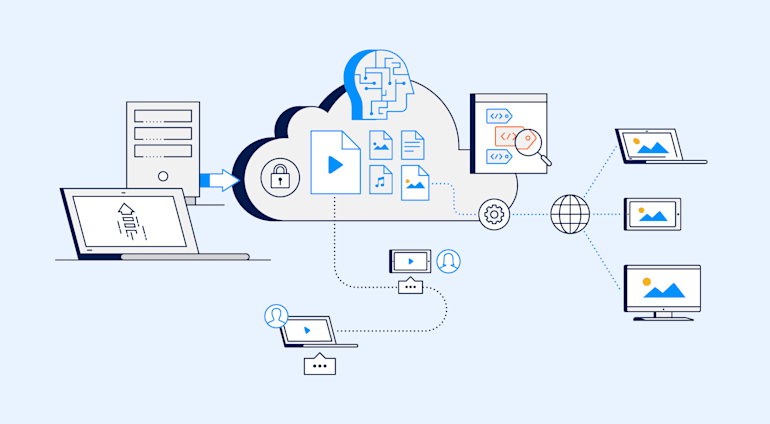At a Cloudinary-sponsored webinar held in July, Russ Barr, director of digital asset management (DAM) at Cloudinary; and Mark Katzin, VP of creative services at Straub Collaborative, elaborated on how to accelerate media workflow with modern DAM solutions. In particular, they delved into the latest DAM trends and integrations. Below is a roundup of those two topics.
The Importance of DAM
Managing digital assets, mostly images and videos, is a challenge for many organizations. Digital is here to stay; content will remain and multiply; and the best DAM systems will win the day. With no DAM setup, you’d be manually tracking, tracing, logging, and accessing digital content in your business—laborious, error-prone chores that swell in complexity over time. After all, content unifies and scales businesses.
Telecommuting for work, an expanding necessity since the onset of the COVID-19 pandemic in March, has brought the digital strategy of companies to the forefront. If successfully planned out, executed, and, better yet, integrated, DAM brings organization and order to chaos.
Current Trends
Since its emergence in the 1990s, DAM has undergone numerous enhancements. Below are its latest areas of focus.
Artificial intelligence (AI). A popular use of AI, now a global buzzword, vis-a-vis DAM is in the automation of asset tagging. However, that process incurs overheads and could hinder workflow. Recent integrations with Amazon and Google, whose huge information repositories are a tremendous help, have resulted in significant reductions in both time and effort.
Leveraging AI for content prediction or content creation through data interpretation and processing is at the forefront of DAM, promising to help librarians with the entire content-creation process.
Insight and analytics. Most DAM systems report on their activities, e.g., the number of downloads and uploads, the files that are being viewed, and the identities of the viewers, shining a light on the content and its performance. Other illuminating data are likes, comments, shares, and outcome-based information, such as which assets led to the most bookings and which ones resulted in products being added to a cart and ultimately purchased. Also important are the assets that mislead consumers and that gave rise to returns.
All that insight bridges the gap between the happenings in the real world and the assets that trigger them. It’s an invaluable reference for planning content and allocating resources.
An upcoming trend is DAMs becoming much more aware of real-world events and highlighting them in reports.
Headless DAM. More and more DAM systems now have built-in capabilities for search, version control, and access control, reducing or eliminating extra development and integration. Gratifyingly, those features ensure a consistent DAM interface for the entire organization.
Another time saver: you can effectively extract headless DAMs and put them into another system with minimal effort.
Video. Even though increasingly prevalent in the visual arena, video is much more expensive to create than imagery. Also, reuse is a challenge, especially if the videos contain context-specific text or themes. Hence the demand for automatic manipulation and customization, e.g., changing one language to another for use in a different market; reformatting for different channels; and cropping and resizing without losing the key component. In other words, you want to optimize, manipulate, adapt, personalize, and localize videos.
Those capabilities could find their way into DAM, after which your DAM system is where you're not only storing videos, but also editing them for improvement and reuse.
Automation. As content and the number of formats, channels, and devices inexorably grow, automation of the myriad DAM tasks—at scale—is the way to go. Additionally, consumers desire and expect personalized experiences, which form the backdrop of purchase decisions.
Integration
DAM systems are no silos. Though not a must, integration makes perfect sense because it means tying your DAM into the various areas of your organization’s ecosystem for effectiveness, time savings, and revenue growth.
Integration of DAM systems is either inbound or outbound:
Inbound. The information for inbound integrations, searchable through metadata attributes and reusable, originates externally. Examples are product data and data accessed through an association and synchronization with a Product Information Management (PIM) system, financial networks, and image libraries like Getty. Your workflow becomes simpler and more transparent because your DAM assets are the master source.
Outbound. Examples of outbound integrations are web CMSs or e-commerce platforms for promotion and automation of marketing campaigns, such as pushing content to social media. In sophisticated integrations, you can simply refer to a file instead of having to download a copy for use.
Cloudinary DAM
Cloudinary’s DAM solution encompasses all the key capabilities: automated, intuitive, and robust. For details, see this Solution's page and our Ultimate DAM Guide.





